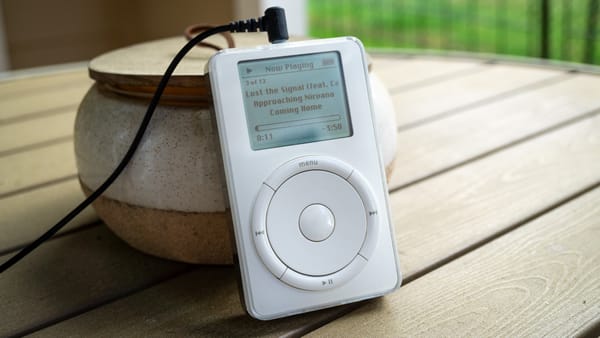Antenna TV is pretty cool, actually
Free over-the-air television is still a thing, and you can set up some modern conveniences.
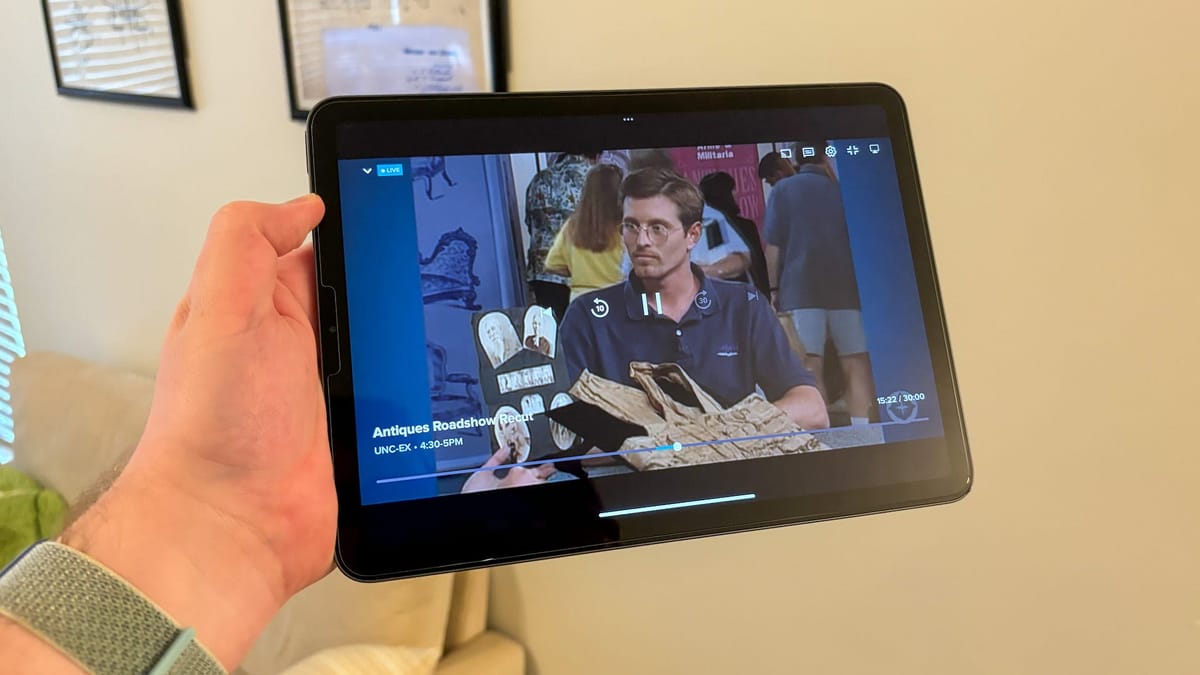
TV is in a weird place right now, at least in the United States. The demand for paid (cable) television is in free-fall, especially among my fellow Gen Z, while prices are somehow continuing to rise. Streaming services were once praised as a far more flexible, budget-friendly, and ad-free alternative to paid television, but the industry has gradually started embracing bundle packages and ad-supported plans. Just as animals in nature keep evolving into crabs, premium television services seem destined to become cable after enough time. There has also been a simultaneous rise in popularity around free FAST services, which mimic the appearance of a live TV guide with “channels” that are usually just episodes of a specific show on loop.
There’s one other option for TV, and it’s one that doesn’t get brought up very often: over-the-air antenna broadcasts. Yes, antenna TV is still around, with crisp digital broadcasts since 2009. There’s also an upgrade to ATSC 3.0 in various stages of rollout across the country, promising interactive elements and 4K support, but it will probably be a while before all the issues are sorted out.
With all the existing options for watching movies, TV shows, sports, and other live content, should you even bother with an antenna? I gave it a try, and the answer is a solid… maybe.
Just plug it in
I lost access to cable TV after I moved out of my parents’ house, and despite Spectrum’s best efforts with mail ads and occasional phone calls, TV is not something I ever cared enough about to pay for myself. However, I did want to watch some of the 2020 Summer Olympics (held in August 2021), which was not something I could get through my mom’s Netflix subscription. NBCUniversal broadcasts the Olympics in the US (for at least the next decade), and there is an NBC local channel in my area, so I thought I would try setting up antenna TV.
I bought a Mohu Leaf 30 to use with my existing Samsung smart TV. The Antenna Man on YouTube, whose videos have been helpful as I figured this stuff out, explains in a video that there is no one-size-fits-all solution. Mohu sells a few indoor antennas like that one that are great options if you’re close enough to TV towers.
There are a few different sites for figuring out which channels are in your area and where the antennas are located. Mohu’s signal locator tool is easy to read, and RabbitEars can give you more precise measurements and additional technical details.

I live in Raleigh, North Carolina, which has local stations for NBC, FOX (which is different from FOX News), PBS, NBC, The CW, CBS, Univision, Telemundo, ABC, and a few others.
I’ve moved the antenna a few times to experiment with the best possible signal. Initially, the antenna was on the wall behind my TV, which worked well for some channels but not others. I checked RabbitEars and the Compass app on my iPhone again, and realized the low-signal channels were all coming from the same tower, and that the tower was facing a different direction than my antenna. I moved the antenna to the adjacent wall, which was roughly in the direction of the tower, and after that the channels worked perfectly. I’ve now learned that the antenna should face the towers with the weakest signal.
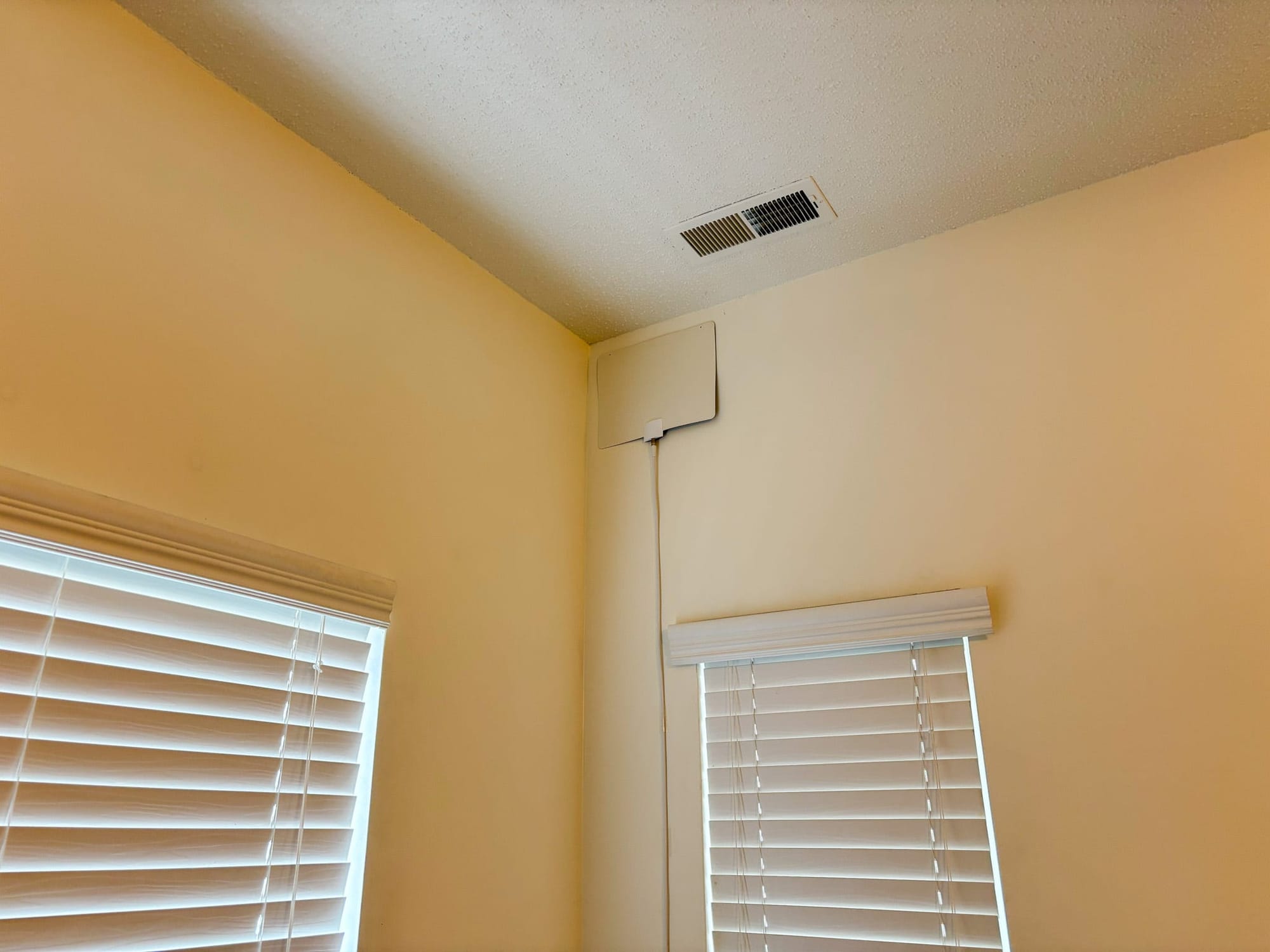
The setup process for antennas is super easy: plug it into the TV, scan for channels from the TV’s settings, and you’re done. I have a Samsung smart TV, which gives you a guide interface, but not much beyond that. Roku TVs seem to offer the best experience here, as they can integrate local channels with Roku’s own online channels, let you search through available channels and shows, and pause for up to 90 minutes with a connected USB drive.
I was indeed able to watch the 2020 Olympic Games on TV for nothing more than the initial cost of the antenna, and I’ve used it for a few other sports events spread across NBC, FOX, and Telemundo. That last one has mostly been helpful for the World Cup and Women’s World Cup matches that FOX wasn’t interested in broadcasting, and even though it is a Spanish-speaking channel, it’s better than nothing. I do wish watching those games would count towards my Duolingo daily practice for Spanish, though.
Besides sports, I’ve mostly just used the OTA TV for local news, and occasionally there’s a dumb reality show or something else that will be interesting for ten minutes. It is fun to occasionally watch an episode of Extreme Makeover: Home Edition, Wipeout, or some other show I haven’t watched or thought about in over a decade.
It’s upgrade time
My initial setup with just the antenna and nothing else worked well enough, but I didn’t always want to sit in front of my TV. After a while, I started looking into upgrades that would allow me to watch TV from other devices (like my tablet while in bed) and record broadcasts for later.
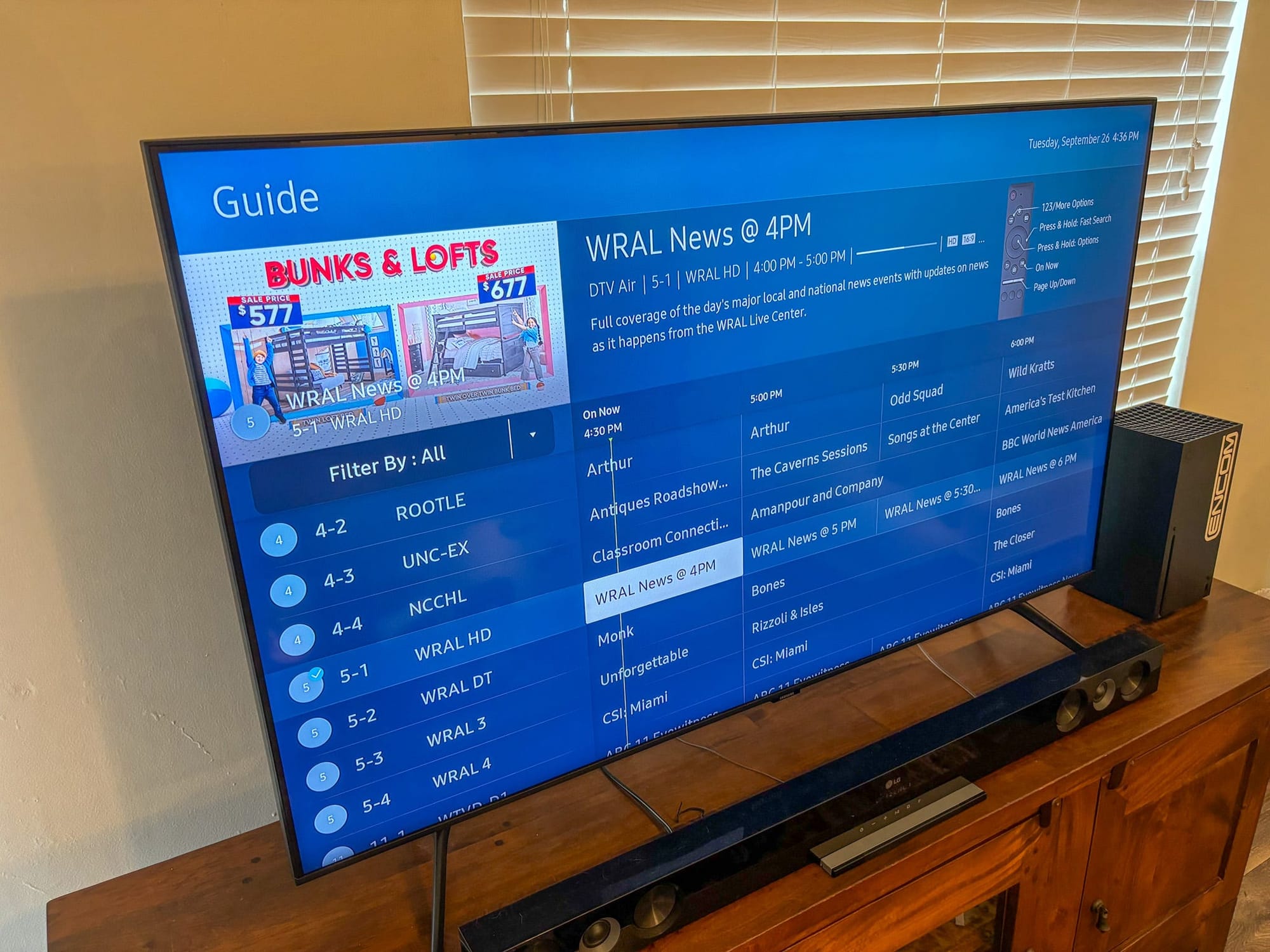
There are many set-top boxes and DVRs built for over-the-air TV, ranging from sub-$50 boxes (those usually don’t have any included storage drives) to high-end multi-tuner DVRs that cost hundreds of dollars. Some of them just have an HDMI output to your TV, while others connect to your Wi-Fi network to stream broadcasts to your TV and other devices. The latter option sounded like what I was looking for, but I didn’t want to give up the direct antenna connection to my TV, since that gave me the best quality possible and wasn’t dependent on my local network or a remote server somewhere.
The solution was a $23 GE four-way antenna amplifier, which allows multiple devices to use the same antenna, supposedly without a loss in signal. My search for OTA boxes eventually led me to Sling’s AirTV 2, which I purchased in used condition on eBay for around $50. It supports up to 1080p streaming, two tuners, playback in the mobile apps or desktop site, and even streaming outside the local network. The DVR features don’t work until you plug in a storage device with the USB port, so I dug out an old 250GB hard drive and put it in a SATA-to-USB adapter.
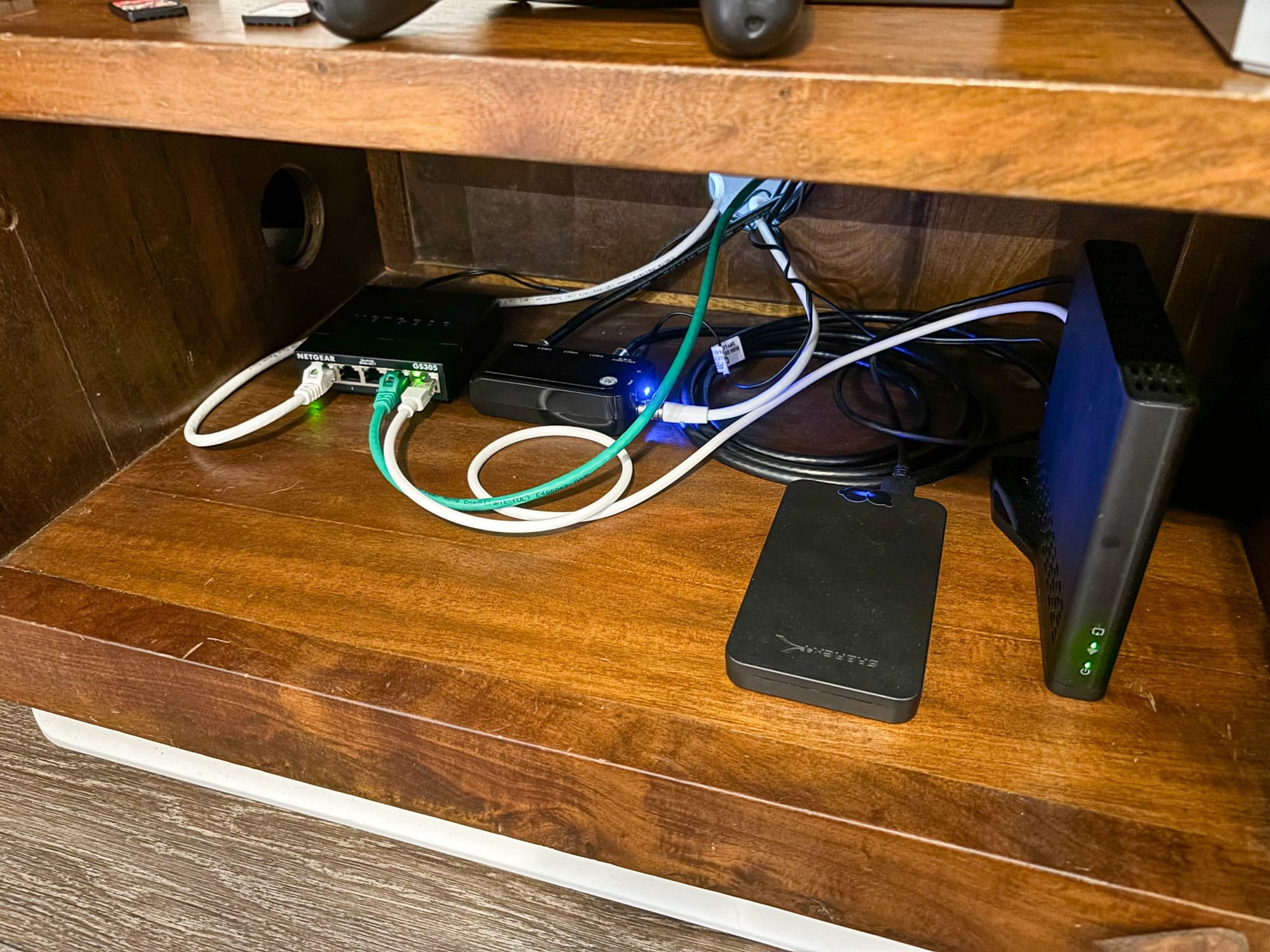
Most other DVR systems with those features require a paid subscription, but Sling sells the AirTV 2 to bolster its paid TV packages with local channels. You don’t have to sign up for Sling’s paid packages to use the AirTV 2, though, which makes it a great deal. The only real catch is that the AirTV 2 can only stream to one device at a time.
The Sling desktop and mobile app are pretty decent. The guide pulls data from the internet, so I get detailed information like episode descriptions and thumbnail images for everything in the guide. However, the home page in the app is nearly useless — it only seems to feature content from Sling Freestream, the ad-supported streaming channels integrated into Sling. I have to go into the guide or DVR pages directly to see what’s on my local channels.
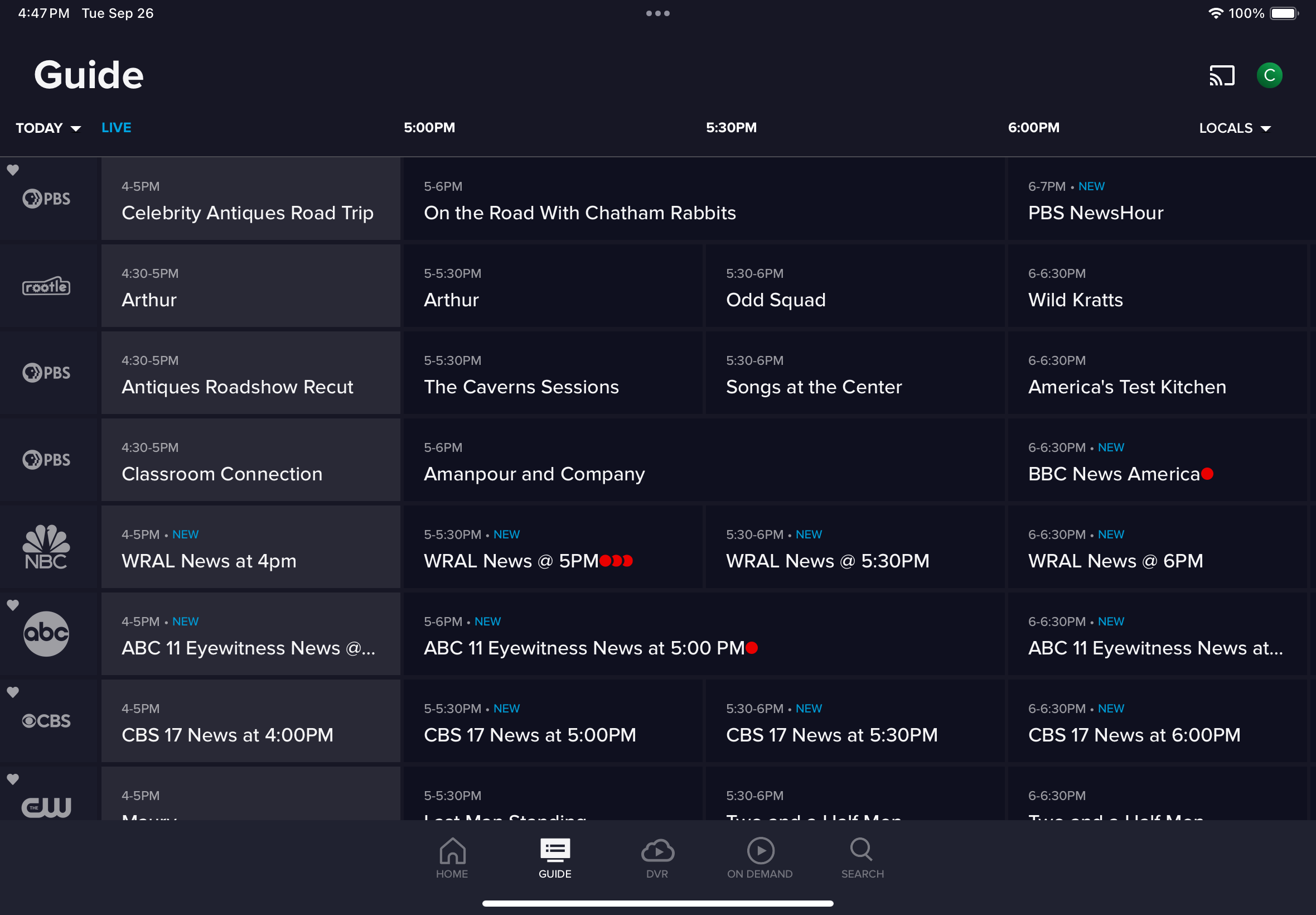
With this setup, I can watch something on my TV in full original quality without relying on an internet connection or apps, while my AirTV records up to two additional channels at the same time. I can watch recordings or all the same live channels through the Sling app on any other device, including when I visit family in another state. Not bad for (roughly) $100, especially since there are no recurring costs.
What now?
I’ve had a fun time experimenting with over-the-air TV, but it’s still an imperfect system that doesn’t always work how it should. I have a few channels that don’t always work, and I’m not sure if it’s a weather issue or something else. This is also something I can’t universally recommend: antenna TV is also a complete non-starter for homes in valleys or other challenging terrain.
There have been some services that attempt to rebroadcast local TV over the internet for those situations, but they always get taken down by legal action. The networks would rather you pay for cable or satellite TV, where they get a cut of your subscription costs… and then you occasionally lose TV when your provider and the networks want to pry more money from each other.
The next few years are going to be interesting for TV in the United States, as cable companies continue bleeding money and streaming services start similar price gouging measures. I’m not sure what the future holds, but I’m happy enough with my current setup.

